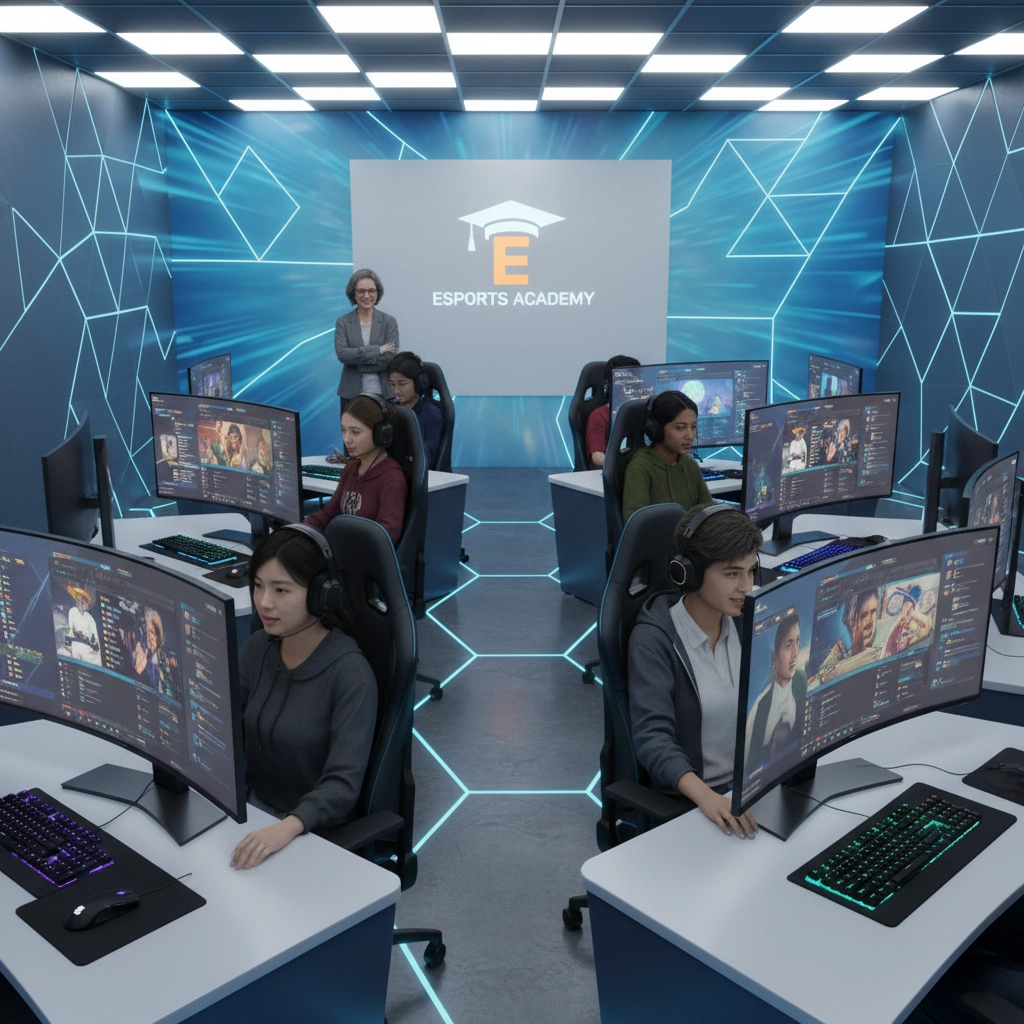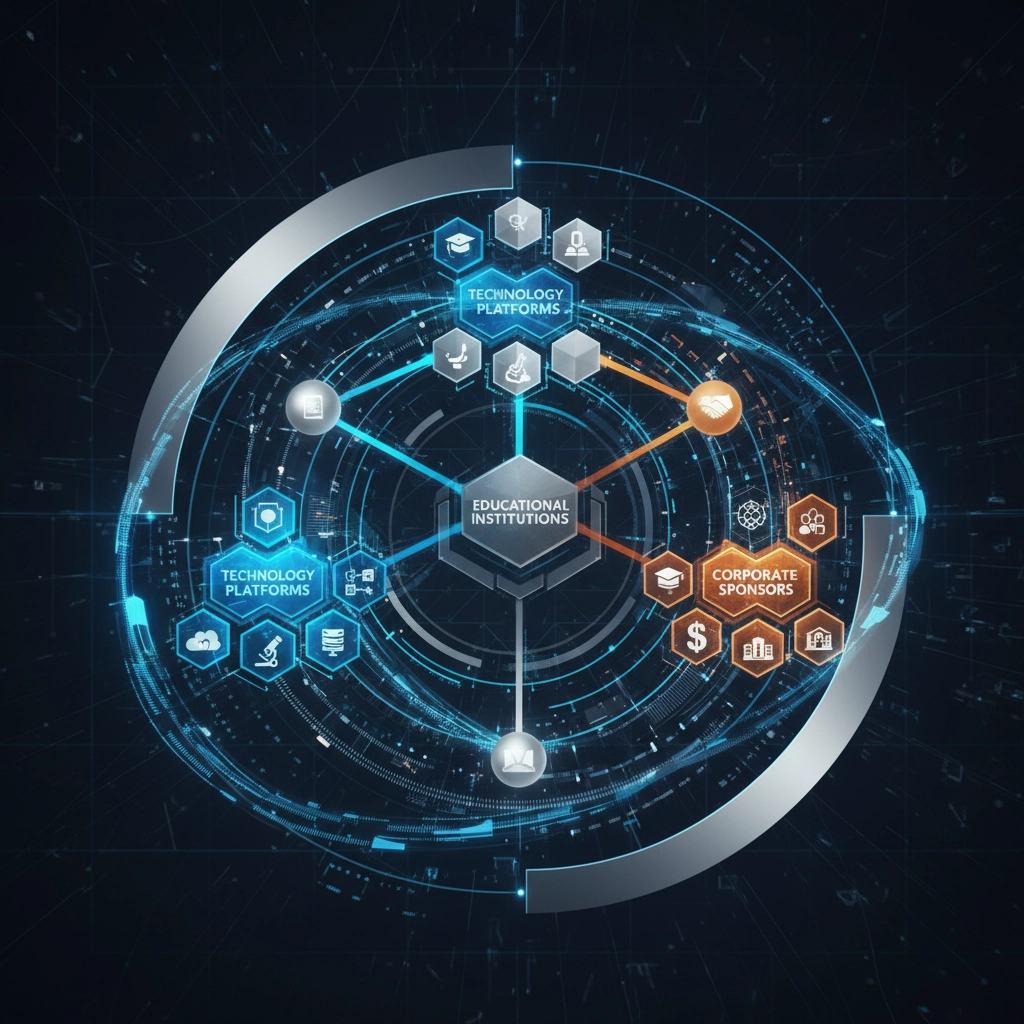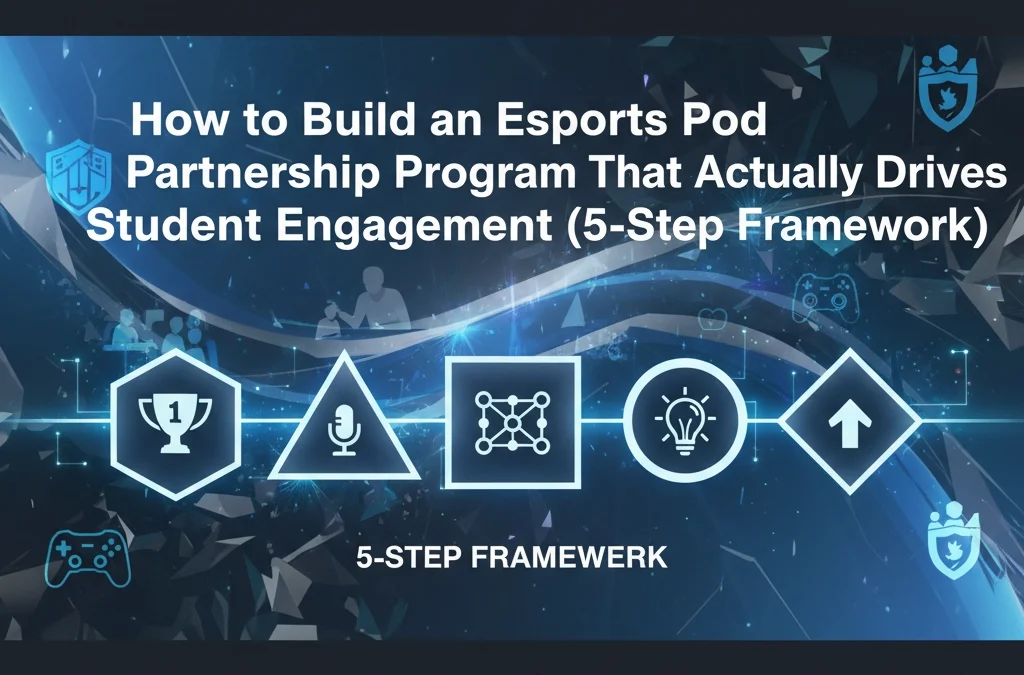The esports industry is experiencing unprecedented growth, with projections indicating the market will reach $16 billion by 2033. More significantly for educational institutions and corporate partners, over 90% of high school students engage with esports in some capacity, compared to just 50% who participate in traditional sports. This shift presents an extraordinary opportunity for brands seeking authentic engagement with the next generation while supporting innovative educational initiatives.
Dakdan Worldwide has positioned itself at the forefront of this transformation, developing comprehensive esports pod solutions that bridge the gap between entertainment and education. Our strategic approach to partnership development creates measurable value for all stakeholders while delivering genuine educational outcomes through simulation-based learning environments.
Step 1: Establish Strategic Partnership Infrastructure
Identify High-Impact Partner Categories
Successful esports pod partnership programs require a diversified network of strategic allies. The most effective partnerships combine educational expertise with industry innovation, creating comprehensive ecosystems that serve multiple stakeholder interests simultaneously.
Technology partners provide the backbone of modern esports education, offering platforms that transform gaming into structured learning experiences. Educational content providers contribute curriculum integration tools that demonstrate clear connections between competitive gaming and academic achievement. Corporate sponsors seeking authentic youth engagement discover opportunities to support meaningful educational initiatives while building brand loyalty among digitally native audiences.
Define Measurable Partnership Objectives
Establishing clear, quantifiable goals ensures all parties maintain alignment throughout program development. Focus on three primary outcome categories: student engagement metrics, academic performance indicators, and career pathway development measurements.
Student engagement rates in integrated esports programs consistently exceed traditional educational approaches, with some institutions reporting engagement increases of over 200% in participating demographics. Academic performance improvements become evident when gaming mechanics reinforce mathematical concepts, strategic thinking, and collaborative problem-solving skills.

Step 2: Design Simulation-Based Learning Experiences
Implement Connected Learning Frameworks
The most successful esports pod programs utilize the Five C's methodology: Choice, Challenge, Collaboration, Control, and Connection. This evidence-based approach integrates student interests with academic objectives while maintaining engagement through competitive elements and peer interaction.
Choice empowers students to select learning pathways that align with their interests and career aspirations. Challenge ensures appropriate difficulty levels that promote growth without creating frustration. Collaboration builds essential teamwork skills through structured group activities and competitive team formation.
Create Cross-Curricular Integration Opportunities
Transform gaming activities into educational experiences by connecting esports mechanics to academic subjects. Mathematics departments can utilize game statistics for data analysis projects, replacing traditional theoretical exercises with engaging, real-world applications that demonstrate immediate relevance.
Science curricula benefit from physics-based gaming scenarios that illustrate complex principles through interactive simulation. Social studies programs can explore cultural impacts of global gaming communities, examining economic, social, and technological influences across international markets.
Step 3: Build Community Through Inclusive Participation
Leverage Existing Student Interests
Recognition of student gaming expertise creates immediate engagement opportunities while validating skills that often go unrecognized in traditional educational settings. Openly discussing video game strategies and incorporating gaming themes into classroom discussions demonstrates institutional respect for student interests and competencies.
Connect with existing gaming clubs and informal student networks to identify natural leaders and enthusiasts who can serve as program ambassadors. These students often possess deep technical knowledge and community connections that accelerate program adoption and peer-to-peer promotion.
Foster Professional Development Pathways
Esports pod partnerships create authentic connections between student interests and emerging career opportunities. The gaming industry encompasses roles in marketing, event management, content creation, technical support, business development, and competitive performance.
Partner organizations can provide mentorship opportunities, internship placements, and career exploration experiences that demonstrate clear pathways from high school gaming participation to professional opportunities in technology, media, and entertainment sectors.

Step 4: Implement Structured Development Programs
Adopt Professional Training Methodologies
Effective esports education mirrors traditional athletic development by breaking complex skills into manageable components. Students develop technical competencies through structured practice sessions while building strategic thinking, communication, and leadership capabilities through competitive scenarios.
Ten-week training cycles provide sufficient time for skill development while maintaining engagement through progressive challenges and measurable improvement indicators. Partner with professional training platforms that offer curriculum materials, assessment tools, and performance tracking systems designed specifically for educational environments.
Integrate Academic and Performance Coaching
Combine in-game skill development with comprehensive academic support services. This holistic approach addresses student needs across multiple dimensions while demonstrating clear connections between gaming excellence and broader life skills.
Physical and mental wellness components ensure balanced development while addressing common concerns about gaming participation. Structured schedules, ergonomic considerations, and wellness education create sustainable participation patterns that support long-term student success.
Step 5: Measure Impact and Scale Operations
Track Comprehensive Engagement Metrics
Implement robust measurement systems that capture multiple success indicators across academic, social, and career development dimensions. Student participation rates, academic performance improvements, and career interest development provide quantifiable evidence of program effectiveness.
Monitor engagement patterns to identify optimal programming schedules, popular activity types, and successful integration strategies. Use this data to refine program offerings while demonstrating value to current partners and attracting additional sponsorship opportunities.
Expand Partnership Networks Strategically
Leverage successful program metrics to attract additional corporate partners seeking authentic youth engagement opportunities. The expanding esports ecosystem creates numerous collaboration possibilities with technology companies, media organizations, educational institutions, and professional sports franchises.
Document case studies that illustrate specific partnership benefits, including brand exposure metrics, student engagement outcomes, and educational achievement indicators. These materials serve as powerful tools for partnership development while establishing your institution as a leader in innovative educational programming.

Utilize Turnkey Implementation Resources
Partner with organizations that provide comprehensive support systems, including curriculum materials, training resources, technical support, and program management tools. These partnerships accelerate implementation while ensuring consistent quality across program components.
Interactive webinars, mentor-led gaming laboratories, and structured curriculum modules create professional learning environments that mirror industry standards. Students gain exposure to authentic professional practices while developing skills that transfer directly to career opportunities.
Maximizing Sponsorship Value Through Strategic Positioning
Corporate partners increasingly recognize esports pods as premium opportunities to reach high school demographics through meaningful educational initiatives. Unlike traditional advertising approaches, esports partnerships create authentic engagement through shared value creation and genuine educational support.
Brands benefit from association with innovative educational programs while gaining access to highly engaged student populations. Students receive professional-grade equipment, expert instruction, and career development opportunities that would otherwise remain inaccessible.
The key to sustainable partnership development lies in demonstrating clear value propositions for all stakeholders while maintaining focus on educational outcomes and student development. Successful programs create win-win scenarios where corporate objectives align with educational missions and student interests.
For institutions ready to implement comprehensive esports pod partnership programs, Dakdan Worldwide offers complete solutions designed to maximize educational impact while creating meaningful sponsorship opportunities. Our proven methodologies and comprehensive support systems ensure successful program launch and sustainable long-term operations.
Contact our team today to explore partnership opportunities and discover how esports pods can transform student engagement while creating valuable corporate partnership opportunities within your educational community.


Recent Comments